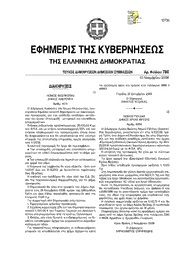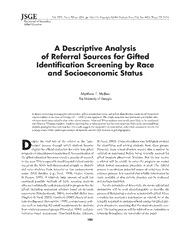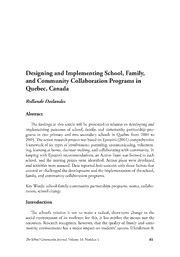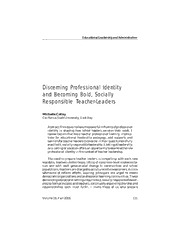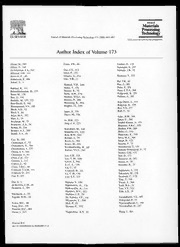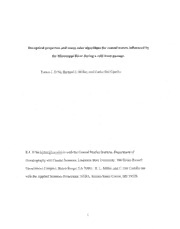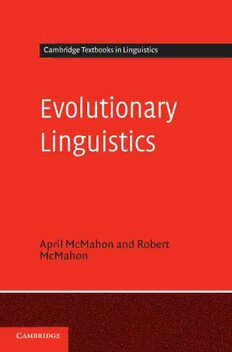
Preview Evolutionary Linguistics
Evolutionary Linguistics How did the biological, brain and behavioural structures underlying human language evolve? When, why and where did our ancestors become linguistic animals, and what has happened since? This book provides a clear, comprehensive but lively introduction to these interdisciplinary debates. Written in an approachable style, it cuts through the complex, sometimes contradictory and often obscure technical languages used in the different scientific disciplines involved in the study of linguistic evolution. Assuming no background knowledge in these disciplines, the book outlines the physical and neurological structures underlying lan- guage systems, and the limits of our knowledge concerning their evolu- tion. Discussion questions and further reading lists encourage students to explore the primary literature further, and the final chapter demonstrates that, while many questions still remain unanswered, there is a growing consensus as to how modern human languages have arisen as systems by the interplay of evolved structures and cultural transmission. april mcmahon is Vice-Chancellor of Aberystwyth University. robert mcmahon is a Research Associate in the Institute of Biological, Environmental & Rural Sciences at Aberystwyth University CAMBRIDGE TEXTBOOKS IN LINGUISTICS General editors: P. AUSTIN, J. BRESNAN, B. COMRIE, S. CRAIN, W. DRESSLER, C. EWEN, R. LASS, D. LIGHTFOOT, K. RICE, I. ROBERTS, S. ROMAINE, N. V. SMITH. Evolutionary Linguistics In this series: A. J. WOODS, P. FLETCHER and A. HUGHES Statistics in Language Studies D. A. CRUSE Lexical Semantics A. RADFORD Transformational Grammar M. GARMAN Psycholinguistics G. G. CORBETT Gender H. J. GIEGERICH English Phonology R. CANN Formal Semantics J. LAVER Principles of Phonetics F. R. PALMER Grammatical Roles and Relations M. A. JONES Foundations of French Syntax A. RADFORD Syntactic Theory and the Structure of English: A Minimalist Approach R. D. VAN VALIN, JR, and R. J. LAPOLLA Syntax: Structure, Meaning and Function A. DURANTI Linguistic Anthropology A. CRUTTENDEN Intonation Second edition J. K. CHAMBERS and P. TRUDGILL Dialectology Second edition C. LYONS Definiteness R. KAGER Optimality Theory J. A. HOLM An Introduction to Pidgins and Creoles G. G. CORBETT Number C. J. EWEN and H. VAN DER HULST The Phonological Structure of Words F. R. PALMER Mood and Modality Second edition B. J. BLAKE Case Second edition E. GUSSMAN Phonology: Analysis and Theory M. YIP Tone W. CROFT Typology and Universals Second edition F. COULMAS Writing Systems: An Introduction to Their Linguistic Analysis P. J. HOPPER and E. C. TRAUGOTT Grammaticalization Second edition L. WHITE Second Language Acquisition and Universal Grammar I. PLAG Word-Formation in English W. CROFT and A. CRUSE Cognitive Linguistics A. SIEWIERSKA Person A. RADFORD Minimalist Syntax: Exploring the Structure of English D. BÜRING Binding Theory M. BUTT Theories of Case N. HORNSTEIN, J. NUÑES and K. GROHMANN Understanding Minimalism B. C. LUST Child Language: Acquisition and Growth G. G. CORBETT Agreement J. C. L. INGRAM Neurolinguistics: An Introduction to Spoken Language Processing and its Disorders J. CLACKSON Indo-European Linguistics: An Introduction M. ARIEL Pragmatics and Grammar R. CANN, R. KEMPSON and E. GREGOROMICHELAKI Semantics: An Introduction to Meaning in Language Y. MATRAS Language Contact D. BIBER and S. CONRAD Register, Genre and Style L. JEFFRIES and D. MCINTYRE Stylistics R. HUDSON An Introduction to Word Grammar M. L. MURPHY Lexical Meaning J. M. MEISEL First and Second Language Acquisition T. MCENERY and A. HARDIE Corpus Linguistics: Method, Language and Practice J. SAKEL and D. L. EVERETT Linguistic Fieldwork: A Student Guide A. SPENCER and A. LUÍS Clitics: An Introduction G. CORBETT Features A. MCMAHON and R. MCMAHON Evolutionary Linguistics Earlier issues not listed are also available Evolutionary Linguistics ApRIL MCMAHON AND ROBERT MCMAHON Aberystwyth University cambridge university press Cambridge, New York, Melbourne, Madrid, Cape Town, Singapore, São paulo, Delhi, Mexico City Cambridge University press The Edinburgh Building, Cambridge CB2 8RU, UK published in the United States of America by Cambridge University press, New York www.cambridge.org Information on this title: www.cambridge.org/9780521891394 © April McMahon and Robert McMahon 2013 This publication is in copyright. Subject to statutory exception and to the provisions of relevant collective licensing agreements, no reproduction of any part may take place without the written permission of Cambridge University press. First published 2013 printed in the United Kingdom at the University press, Cambridge A catalogue record for this publication is available from the British Library Library of Congress Cataloguing in Publication data McMahon, April M. S. Evolutionary linguistics / April McMahon, Robert McMahon. p. cm. – (Cambridge textbooks in linguistics) Includes bibliographical references and index. ISBN 978-0-521-81450-8 (hardback) – ISBN 978-0-521-89139-4 (paperback) 1. Language and languages–Origin. 2. Anthropological linguistics. 3. Human evolution. I. McMahon, Robert, 1964– II. Title. p116.M45 2012 401–dc23 2012014211 ISBN 978-0-521-81450-8 Hardback ISBN 978-0-521-89139-4 paperback Cambridge University press has no responsibility for the persistence or accuracy of URLs for external or third-party internet websites referred to in this publication, and does not guarantee that any content on such websites is, or will remain, accurate or appropriate. Contents List of figures page x Preface xiii Acknowledgements xix 1 Evolution and history 1 1.1 Overview 1 1.2 Evolutionary linguistics 1 1.3 Early ideas about the origin of language 2 1.4 Evolution and history 6 1.5 Saying ‘evolution’ without meaning it 13 1.6 Beyond evolution? 18 1.7 Summary 20 Further reading 21 points for discussion 21 2 Evidence for evolution 23 2.1 Overview 23 2.2 The argument from design 23 2.3 The critical period hypothesis 26 2.4 The argument from poverty of the stimulus 31 2.5 Creativity and creolisation 37 2.6 Language and the brain 40 2.7 ‘Language genes’ 44 2.8 Summary 47 Further reading 48 points for discussion 49 3 The comparative methods 51 3.1 Overview 51 3.2 Going backwards to move forwards 51 3.3 An outline of the comparative method in linguistics 53 3.4 Reconstruction and comparison are time-limited 55 3.5 Reconstruction and comparison of morphosyntax 58 3.6 Global etymologies 61 3.7 Limitations on reconstruction 67 3.8 The comparative method in biology 70 3.9 Summary 77 Further reading 78 points for discussion 79 vii viii contents 4 Who, where and when? 81 4.1 Overview 81 4.2 Biological family trees 81 4.3 Beware: falling trees! 87 4.4 Hominid histories 90 4.5 Summary 99 Further reading 100 points for discussion 101 5 The vocal tract 102 5.1 Overview 102 5.2 producing speech sounds 102 5.3 Uniquely human? 104 5.4 Complexities and critiques 108 5.5 Adaptations and complications 112 5.6 Summary 115 Further reading 116 points for discussion 117 6 Language and the brain 119 6.1 Overview 119 6.2 Brains and genes: one topic, not two 119 6.3 Elementary brain geography 121 6.4 Specialisation of the brain for language 127 6.5 Evolution and the human brain 135 6.6 Summary 145 Further reading 146 points for discussion 147 7 Language and genes 148 7.1 Overview 148 7.2 What is a gene, and how does it work? 149 7.3 Genes in populations 156 7.4 Genes in individuals 171 7.5 Summary 186 Further reading 187 points for discussion 188 8 Big bang or cumulative creep? Saltation versus gradual, adaptive evolution 189 8.1 Overview 189 8.2 Saltation: language and the big bang 189 8.3 A gradual, adaptive view of the evolution of language 203 8.4 Summary 215 Further reading 216 points for discussion 217 9 From protolanguage to language 219 9.1 Overview 219 9.2 Why protolanguage? 220 9.3 The nature of protolanguage 224
The list of books you might like

The Mountain Is You

Rich Dad Poor Dad

What Happened to You?

$100m Offers

Volet Accident Vasculaire Cérébral (AVC)
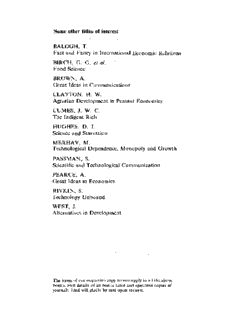
By Bread Alone

ERIC EJ1097751: Student Services Support of Developmental Education

GB 1796-1: Tyre valves -Part 1:Clamp-in valves

MANUAL OF GRAPHIC TECHNIQUES 3 (ic anon uploaded)

Capitolul 4.1 Apa
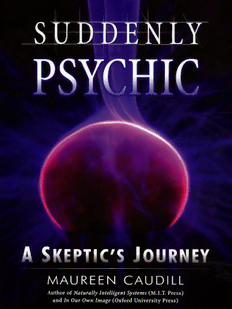
Suddenly Psychic: a Skeptic''s Journey

Gorgeous George: The Outrageous Bad-Boy Wrestler Who Created American Pop Culture

An Integral Guide to Recovery: Twelve Steps and Beyond
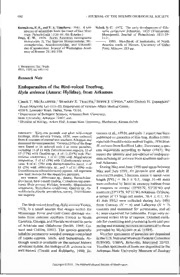
Research Note - Endoparasites of the Bird-voiced Treefrog, Hyla avivoca (Anura: Hylidae), from Arkansas
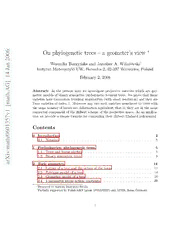
On phylogenetic trees - a geometer's view

Pass the PSA
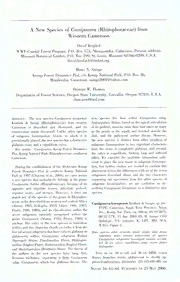
A New Species of Cassipourea (Rhizophoraceae) from Western Cameroon
